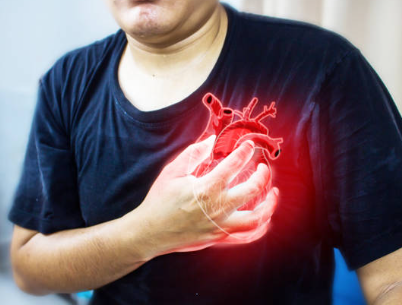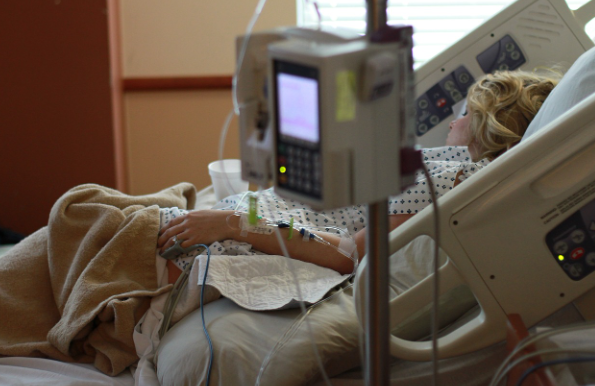In 2024,( CVD) Cardiovascular disease, remains the leading cause of death worldwide. According to recent estimates, approximately 18 million people worldwide die of cardiovascular disease each year.
Of which coronary heart disease is the most common, transient heart disease alone accounted for nearly 9 million deaths in 2021, making it the world’s leading cause of death, with stroke cardiovascular issue accounting for another almost 7.3 million deaths.
Countries with better health systems still experience more deaths from heart disease. Heart disease causes about one hundred thousand deaths each year, so in developed countries such as Japan and the UK, the age-standardized death rate is much lower than in Eastern Europe.
What is heart disease?
Heart disease, also known collectively as a disease, includes many different conditions related to the blood vessels of the heart. Commonly, coronary artery disease is a heart attack, heart failure, and irregular heartbeat. Heart disease can affect people of any age, but older people, obese people, or people who smoke are at particular risk.

Heart Disease Risk Factors
Heart disease can be caused by several factors, some of which are lifestyle-related, while others are the result of medical problems or genetic inheritance.
1:Atherosclerosis:
Fat, cholesterol, and other substances accumulate in the blood vessels and narrow them, affecting the heart’s arteries, and leading to coronary artery disease and heart attacks. It damages Blood Vessels and Causes Heart Disease.
2: High Cholesterol:
Hypercholesterolemia is when the amount of cholesterol in the blood is too high. Cholesterol is necessary for building cells, but too much of it accumulates in the arteries, forming a blockage that narrows the arteries and the heart. And reduces blood flow to other organs. Reduced blood flow can lead to chest pain and angina, and over time increases the risk of heart attack. It can cause disease or paralysis.
3: Diabetes:
.Diabetes is a chronic complaint that affects the body’s capability to control blood sugar, causing persistently high blood glucose situations. High blood sugar can cause blockages to make up in the highways, narrowing them and confining blood inflow.
In addition, diabetes is frequently associated with other threat factors, similar to high blood pressure and cholesterol, which place a fresh burden on the cardiovascular system. It increases the threat of heart attack and stroke.
4: Obesity:
Obesity is a major risk factor for heart disease because excess body weight often leads to diseases such as hypertension, high cholesterol, and type 2 diabetes, which can put stress on the cardiovascular system. It can affect lipid metabolism, increasing the risk of atherosclerosis, the buildup of plaque in the arteries that restricts blood flow, increases blood pressure and ultimately increases the risk of heart attack and stroke.
5 Smoking:
Smoking is a major risk factor for heart disease because it damages the cardiovascular system in several ways. Narrows and restricts blood flow This process raises blood pressure and increases the risk of blood clots that can cause a heart attack or stroke.
In addition, smoking reduces the oxygen in the blood. Reduces the amount of oxygen the heart has to work harder to deliver oxygen to the body. Over time, this increased pressure can weaken the heart muscle and cause overall cardiovascular disease.
6: Lack of exercise:
Inactivity is a major cause of heart disease because lack of physical activity can lead to various risk factors such as obesity, high blood pressure, and elevated cholesterol levels. And blood vessels become less efficient, reducing cardiovascular fitness.
This reduction increases the risk of atherosclerosis, in which arteries become narrowed or blocked by plaque buildup, leading to heart attacks and strokes.
7: Unhealthy diet :
An unhealthy diet significantly increases the risk of heart disease. A diet high in saturated fat, trans fat, and cholesterol causes plaque to build up in the arteries, narrowing them and obstructing blood flow. Processed Diets High consumption of sugary drinks and refined carbohydrates can also lead to obesity, high blood pressure, and increased blood sugar levels.
Moreover, a lack of fruits and vegetables in the diet deprives the body of important nutrients and antioxidants needed for heart health. Regular consumption of such unhealthy foods can eventually lead to serious cardiovascular problems.
8:Hereditary factors:
.Hereditary factors play an important role in the development of heart disease because genetic predispositions can influence various risk factors if there is a family history of heart disease. This can increase an individual’s risk. Genetic changes can affect cholesterol metabolism, leading to conditions such as familial hypercholesterolemia, which significantly raises cholesterol levels. Traits can influence the body’s response to lifestyle factors such as diet and exercise.
9: Stress:
Stress can play an important role in the development of heart diseases because it triggers a series of physiological reactions that can negatively impact cardiovascular health. When a person feels stressed, the body releases hormones such as adrenalin and cortisol.
Over time, chronic stress can lead to unhealthy behaviors such as poor diet, lack of exercise, smoking, or heavy drinking that increase the risk of heart disease. What’s more, long-term stress can increase inflammation and contribute to the formation of plaque in the arteries, which increases the chances of heart attack and other cardiovascular problems.
10:Excessive alcohol consumption:
Excessive alcohol consumption leads to heart disease Chronic or excessive drinking can raise blood pressure, which puts pressure on the heart and blood vessels, increasing the risk of heart attack and stroke.
Alcohol consumption can lead to cardiomyopathy, a condition in which the heart muscles become weak and cannot pump blood efficiently. Alcohol also contributes to the accumulation of fatty deposits in the liver, which can cause disease and metabolic disorders that further increase the risk of heart disease
11: Sleep deprivation:
.Lack of sleep can significantly increase the risk of heart disease, which can harm health. Chronic stress can damage blood vessels and contribute to the buildup of plaque that narrows arteries.
In addition, lack of sleep affects the balance of hormones that control appetite, leading to unhealthy eating habits. A lack of sleep is also linked to irregular heartbeat and reduced heart function.
12:Hypertension:
High blood pressure, also known as hypertension, is a major risk factor for heart disease because it puts more pressure on the heart and blood vessels. Over time, this increased pressure can cause thickening of the heart muscle, such as the left ventricle. Called coronary hypertrophy, which reduces the heart’s ability to pump blood, high blood pressure also contributes to the development of atherosclerosis, in which the arteries become narrowed and hardened due to plaque buildup. It may be the cause of heart attack and stroke
Symptoms of Heart Disease
Heart disease is a major cause of death worldwide, so it is very important to understand its symptoms so that timely diagnosis and treatment can save the patient’s life.Here are some notable heart disease symptoms
| Heart Disease Warning Signs | Symptoms |
| 1. Chest Pain or Discomfort | Chest pain is usually felt as pressure, throbbing, or pain in the middle or left side of the chest that lasts for a few minutes or may subside |
| 2. Shortness of Breath | Shortness of breath can often be a sign of heart disease, especially if the heart is not pumping blood properly. Fainting. May occur, especially if these symptoms are accompanied by chest pain or shortness of breath |
| 3. Fatigue | Heart disease has unusual or severe fatigue,often without doing anything. |
| 4. Irregular Heartbeat: | Rapid or slow heartbeat or irregular heartbeat can also be a sign of heart disease |
| 5. Pain in the Neck, Jaw.Throat, upper abdomen or lower back. | Women usually experience pain in the neck,jaw,throat,upper abdomen or lower back. |
| 6. Dizziness or Lightheadness | dizziness can cause heart disease. |
| 5. Pain in the Neck, Jaw.Throat, upper abdomen, or lower back. | Swelling in Feet, ankles, or legs can be a sign that the heart is having trouble pumping blood |
| 8. Nausea or Vomiting | In the case of reading a heart attack, people, especially women, may feel nausea or vomiting. |
| 9. Sweating | For no apparent reason, it can also be a sign of heart disease, especially if accompanied by chest tightness. |
Diagnosing
: Various tests are performed to diagnose heart disease which help in early detection of potential problems and facilitate taking appropriate treatment steps.
Some of the common tests to diagnose heart disease are:
1: Electrocardiogram:.
Records the heart’s electrical activity to detect any abnormalities such as irregular heartbeats or past heart attacks.
2:Echocardiogram:
This is an ultrasound of the heart that shows the structure and function of the heart. Which shows poor blood flow, damage to the heart muscle, or abnormal heart valves.
3 Stress test: Tests the heart’s function during physical activity, such as walking on a treadmill, to reveal problems that may not appear when the body is at rest.
4: Blood tests:
Blood tests play an important role in the diagnosis of heart disease. They detect various risk factors and thus help to a great extent in determining the presence of heart disease. Here are some important tests.
- Lipid Profile:It measures cholesterol levels (LDL,HDL and Triglycerides) to predict the risk of atherosclerosis and heart disease.
- High-Sensitivity C-Reactive Protein(hs-CRP):This test detects the presence of inflammation in the body and can indicate an increased risk of heart disease.
- Cardiac Enzymes:As troponin tests can indicate damage to the heart muscle, they are particularly helpful in diagnosing heart attacks.
- B-type Natriuretic Peptide (BNP):Elevated levels of BNP may indicate heart failure and thereby predict the severity of the condition.
5: Coronary Angiography:
This is a catheter-based procedure in which dye is injected into the lining arteries to visualize blockages, especially when a blockage is suspected. Provides detailed images of blood vessels that can detect blockages ‘
6:CT Coronary angiography:
This is a CT scan that provides detailed images of the heart and blood vessels to detect blockages and plaque build-up.
7:Cardiac MRI:
This is damage or inflammation of the heart muscle Provides detailed images to help identify, especially when other tests are unclear.
8: Nuclear Cardiology Tests:
Such as( Myocardial perfusion imaging) uses a small amount of radioactive material to look at blood flow in the heart.especially useful for identifying areas of poor blood supply.
9:Holter Monitor: This is a portable ECG device that is worn 24-48 hours a day to record heart rate activity over time.
These tests are often used in combination to help health professionals diagnose heart disease. Able to diagnose, monitor, and treat.

Types Of Heart Disease
Heart disease consists of several types that affect the structure and function of the heart. Here are some common types:-
1: Arrhythmia:
Arrhythmia is a cardiovascular condition characterized by abnormal heartbeats, including symptoms such as irregular heartbeat, dizziness, or fainting.
2:Coronary Artery Disease:
CAD is a condition in which plaque builds up in the coronary arteries, narrowing the arteries and reducing blood supply to the heart, which can lead to chest pain, angina, shortness of breath, or a heart attack
3:Heart Failure:
Heart failure is a chronic condition in which the heart cannot pump blood efficiently, causing symptoms such as fatigue, shortness of breath, and swelling in the legs and abdomen. These include those that weaken the heart over time.
4: Heart Valve Disease:
Heart valve disease occurs when one or more of the heart’s four valves.
Failure to function properly that affects blood flow can include valve narrowing, stenosis, leakage(regurgitation), or improper closure, leading to symptoms such as fatigue, shortness of breath, and chest pain. This disease can also be caused by aging infections or birth defects.
5: Heart Attack:
A heart attack, also known as Myocardial infarction, occurs when the blood supply to a part of the heart stops, often due to a blood clot that deprives the heart muscle of oxygen, resulting in damage to the affected part. Common symptoms include chest pain or discomfort, difficulty breathing, nausea, dizziness, and pain in the neck and arms, neck, or jaw.
It often manifests as a feeling of tightness or pressure in the chest and can spread to the arms, neck, jaw, or back.

6: Angina:
Angina attacks may begin after strenuous physical activity or a heavy meal and can be divided into two types: Stable angina, which occurs in a predictable pattern, and unstable angina, which is more unpredictable and may occur even during rest. Although angina is not itself a heart attack, it can be a late warning sign of a heart attack or other heart disease.
7:Cardiomyopathy:
Cardiomyopathy is a disease of the heart muscle that affects the heart’s ability to pump blood and if not treated in time can lead to heart failure. There are several types of cardiomyopathy.
- Dilated Cardiomyopathy: Homeopathy is the most important type in which the heart chambers become enlarged and weak, making it difficult to pump blood.
- Hypertrophic Cardiomyopathy: This disease involves abnormal thickening of the heart chambers, especially the left ventricle, which can obstruct blood flow and increase the risk of sudden heart attack.
- Restrictive Cardiomyopathy: A rare type in which the heart muscle stiffens and loses elasticity, limiting the heart’s ability to fill with blood between beats.
8:Congential Heart Disease:
Congenital heart disease refers to structural defects that are present in the heart from birth and affect the heart’s function and blood flow. These defects can vary in severity. Resolve spontaneously, while sometimes there are complex problems that require lifelong care. Common types of CHD include septal defects,
This disease causes holes in the walls that separate the chambers of the heart. Valve abnormalities. This disease involves incomplete or defective heart valves that do not open or close properly. Transposition of the great arteries In this disease, the configuration of the major arteries is changed, which affects the blood flow.
Medications
A variety of medications are used to treat heart disease to help improve heart function, reduce symptoms, and prevent complications. Common medications used for heart disease include
| Medicines | Uses | Side Effects |
| Antiplatelets(Aspirin) | Antiplatelets can reduce the risk of a heart attack or stroke by preventing abnormal clotting in the arteries | Common side Effects : Increased Bleeding, Nosebleeds, Stomach Pain, Indigestion Serious side effects: Gastrointestinal Bleeding, Hemorrhagic Stroke, Allergic Reactions, Anemia, Kidney Damage |
| ACE Inhibitors | Hypertension: ACE inhibitors lower blood pressure, can help treat heart failure, improve kidney function, may help reduce the risk of having a stroke, and can help treat migraines. | Cough, Hypotension, Angioedema, Dizziness, Reversible renal impairment, Headache, Swelling, Jaundice, Allergic reactions, Rash, Nausea, Weakness, Diarrhoea |
| Statin | Statins are a class of drugs that can lower cholesterol levels in the blood and reduce the risk of heart attack, stroke, and other cardiovascular conditions. | Diarrhea, Headache, Myalgia, Bloating, Abdominal pain, Nausea, Type 2 Diabetes, Heartburn, Muscle damage. |
| Beta-blocker | Beta-blockers can improve heart function. It can prevent chest pain, and irregular heartbeat, reduce tremors, and control high blood pressure also. | Dizziness, Fatigue, Nausea, Diarrhea, Headache, Insomnia, Low blood pressure, ConstipationDepression, Cold feet and hands, Slow heartbeat |
| Anticoagulants | it can help prevent blood clots from forming and growing larger while the body reabsorbs them | Headache, Dizziness, Hair Loss, Itchy skin, Jaundice, Indigestion, Shortness of breath, Red and Brown urine |
| Calcium channel blocker | CCBs prevent calcium from entering the heart and arteries, which reduces the force of the squeeze and lowers blood pressure, it reduces chest pain caused by heart disease, also known as angina, and it can control irregular heartbeat. | Calcium channel Blocker Dizziness, Headache, Constipation, Heartburn, Nausea, A skin rash or flushing, Fatigue |
| Nitrate | Nitrates are useful in the management and treatment of Angina | Headaches, Hypotensions, Flushing, Skin irritation, Allergic reactions, Nausea and vomiting, Slow heartbeat. |
| Digoxin | Digoxin can control irregular heartbeat,, and,it can also help to manage the symptoms of heart failure | Breathing problems or wheezing, Racing heart, fever, Nausea and vomiting, Joint pain, Itching, Swelling of the face, lips, mouth, tongue, or throat. |
| Diuretics | Diuretics help to dispose of extra fluid and salt from the body. They also treat a variety of medical problems, such as heart failure, and high blood pressure. | Frequent urination, Weakness, Muscle cramps, Dehydration, Skin rash, Increased thirst, Electrolyte abnormalities |
Medical and Surgical Procedures
Various medical and surgical procedures are used to treat heart disease, some of them are described here.
1:Angioplasty and Stent Placement:
- Angioplasty
A small balloon is inserted through a catheter into the blocked or narrowed artery. When it is in place, the balloon is inflated to open the artery and improve blood flow.
- Stent Placement
A wire mesh tube is inserted for some stents to release medication to prevent blockages.
2:Coronary Artery Bypass Grafting(CABG)
Also known as bypass surgery, it involves taking a healthy blood vessel from another part of the body, such as the leg or breast, to create a new path around the blocked coronary artery. Used for people with artery disease
3:Heart Valve Repair or Replacement:
If the heart wall is narrow or leaky, surgeons can repair it to improve blood flow.
If the heart wall cannot be repaired, the wall can be replaced with a mechanical or biological graft usually made from animal tissue.

4:Pacemaker implantation:
A pacemaker is a small device that is implanted under the skin, usually near the collarbone. It works to regulate abnormal heartbeats by sending electrical signals to the heart. Used for people who have a slow or irregular heartbeat.
5:Implantable Cardioverter Defibrillator(ICD):
Like a pacemaker, an ICD is implanted under the skin and thus monitors the heart rate. It is usually used for people who are at high risk of having a heart attack.
6:Cardiac Ablation:
.This method is used to treat irregular heartbeats. In this process, a catheter is passed through a blood vessel to the heart and then a radiofrequency, laser or pulse therapy is used to destroy a small part of the heart that is irregular. This process normalizes the heart’s signal flow and re-regulates the heart rate.
7:Left Ventricular Assist Device(LVAD):
This is a mechanical pump that helps the left ventricle of the heart pump blood. VAD is often used temporarily for patients who require transplantation, also known as bridge-to-transplant, or for permanent treatment in those who are transplant candidates.
However, it is a device that improves the patient’s quality of life and helps reduce the symptoms of congestive heart failure significantly.
8:Heart Transplant:
It is a surgical procedure in which the diseased heart of a curable heart patient is replaced with a healthy donor heart. After that, the patient is given certain medicines so that the transplanted new heart becomes acceptable to the body and the risks of rejection are minimized. A heart transplant not only improves the patient’s life but also gives him a new life.
9:Transcatheter Aortic Valve Replacement(TAVR)
This is a minimally invasive procedure by which the aortic valve. is replaced. This treatment is used especially for patients who have a narrowed valve or are not suitable for open heart surgery.
In this procedure, a catheter is delivered to the heart through a blood vessel, and a new valve is placed in place of the old valve. TAVR improves heart rhythm and makes breathing easier. And thus the patient recovers quickly.
10:Endarterectomy:
This is a surgical procedure that removes plaque from the walls of the arteries to improve blood flow. The procedure is usually performed in the carotid artery where the plaque is located. Accumulation can also lead to stroke.
Through this surgical procedure, the arteries are opened, which improves blood flow to the brain and reduces the risk of stroke. This treatment method is beneficial for these patients. In which there is a severe blockage in the arteries due to plaque.
Best Hospitals in the world for Cardiology
The best cardiology hospitals in the world not only provide the latest facilities in the treatment of heart diseases but also provide world-class services. These hospitals not only have modern diagnostic equipment and treatment facilities,These hospitals not only have advanced diagnostic and treatment facilities, but also play a vital role in research and education, hence the continuous excellence and innovation in the field of cardiology.

| Medical Center | Country | City | Specialties & Services |
| Mayo Clinic | United State | Rochester, Minnesota | Cardiac Surgery, Interventional Cardiology Cardiac Imaging, Cardiac Rehabilitation Pediatric Cardiology, preventive Cardiology Heart Health Education and Research |
| Cleveland Clinic | United State | Cleveland, Ohio | Cardiac Surgery Interventional Cardiology Electrophysiology Heart Failure And Transplantation Cardiac Imaging PreventiveCardiology |
| Mount Sinai Hospital | United State | New York | Cardiac Surgery Interventional Cardiology Electrophysiology Heart Failure And Transplantation Cardiac Imaging PreventiveCardiology and Rehabilitation Structural Heart Disease Program |
| Royal Brompton and Harefield Hospital | United Kingdom | London | Interventional Cardiology Electrophysiology and Arrhythmia Management Heart Failure And Transplantation Adult Congenital Heart Disease (ACHD) Structural Heart Disease Program Cardiac Imaging Inherited Cardiac Conditions Cardiothoracic Surgery Specialized Cardiac Clinics and programs |
| Deutsches Herzzentrum (German Heart Institute) | Germany | Berlin | Adult and Pediatric Cardiology Heart Failure And Transplantation Interventional Cardiology Cardiothoracic Surgery PreventiveCardiology and Rehabilitation Advanced imaging and Diagnostic Pulmonary Hypertension |
| Royal Prince Alfred Hospital | Australia | Sydney | PreventiveCardiology and Rehabilitation Advanced imaging and Diagnostic Pulmonary Hypertension Adult and Pediatric Cardiology Electrophysiology and Arrhythmia Management Heart Failure And Transplantation Specialized Cardiac Clinics |
| National Heart Center Singapore(NHCS) | Singapore | Singapore | Cardiac Surgery Interventional Cardiology Electrophysiology Heart Failure Management Cardiac Imaging Cardiac Rehabilitation Pediatric Cardiology Emergency and Acute Cardiac Care |
| Toronto General Hospital | Canada | Toronto, Ontario | Heart Transplantation Cardiac Surgery Interventional Cardiology Electrophysiology Heart Failure Management Cardiac Imaging |
| Tokyo University Hospital | Japan | Tokyo | Coronary Artery Disease(CAD)Treatment Heart Failure Management Valvular Heart Disease Arrhythmia Treatment Congenital Heart Disease Cardiac imaging and Diagnostics Preventive Cardiology Cardiac Surgery Vascular Medicine |
Precautions after a heart disease
It is important to take preventive measures after a heart attack to prevent further complications and promote health.
1: Balanced Diet: Eating a heart-healthy diet can significantly reduce the risk of heart attack. Patients should eat a balanced diet that includes fruits, vegetables, whole grains, lean protein, and healthy fats like nuts and fish. Fat, sodium, and added sugar intake should be reduced.
Furthermore, food intake should be controlled and eating habits should be improved to maintain a healthy weight to avoid the dangerous consequences of heart disease

2: Avoid smoking :
Cigarette smoking can be a major risk factor for heart disease. It damages blood vessels in several ways. Cigarette smoke contains chemicals such as nicotine and carbon monoxide that not only raise blood pressure but also reduce the supply of oxygen and thus lead to fatty deposits in the arteries, which increases the risk of arteriosclerosis and narrowing of the arteries, restricting blood flow and leading to heart attacks, strokes, and other cardiovascular events.
The risk of diseases increases significantly, so quitting smoking can not only reduce these risks but also improve heart health over time.
3;Blood Pressure;
It is very important to keep the blood pressure normal in heart patients, which should usually be 80/120 mmHg but can vary from individual to individual.
Heart patients should check their blood pressure daily or as their doctor directs.
4: Reduce Cholesterol situations:
Low cholesterol plays an important role in preventing heart disease. Excess cholesterol can build up in the arteries and cause blockages, affecting blood flow and greatly increasing the risk of heart disease and heart attack.
A healthy diet including fruits and vegetables, and fiber-rich foods help lower cholesterol, and regular exercise, avoiding smoking, and avoiding fatty foods also help control cholesterol and thus improve heart health.
5: Lose weight
Losing weight can greatly reduce the risk of heart disease. Excess weight puts pressure on the heart, which also increases blood pressure and cholesterol levels, and thus increases the risk of diabetes, which affects heart health.
It is very harmful to the heart, so by losing weight, not only the burden on the heart can be reduced, but also the chances of blockages in the blood vessels can be reduced and thus help prevent heart disease.
6: Limit alcohol consumption inordinate:
Consumption of alcohol is harmful to heart disease patients. Excessive consumption of alcohol not only increases blood pressure but also affects the regularity of heartbeat which causes problems like atrial fibrillation. It increases the risk of blood clots and stroke.
Alcohol also weakens the heart muscle, which leads to heart failure. In addition to alcohol consumption, heart medications lose their effectiveness and thus further increase the risk of heart attack.
7:Reduce stress:
.Stress is a major cause of heart disease. Sustained stress harms heart rate, blood pressure, and arteries and thus increases the risk of heart disease. Exercise, yoga, meditation, and adequate sleep can help reduce stress.
In addition, participating in enjoyable activities and spending time with family and friends can provide peace of mind and improve heart health.
8:Regular Exercise:
Regular exercise is essential to control the risk of heart disease. Exercise not only strengthens the heart but also improves blood circulation and thus helps control blood pressure and cholesterol.
As little as 30 minutes of activity such as brisk walking, running or cycling improves heart health. Regular exercise not only keeps weight under control but also reduces the risk of conditions like diabetes and thus prevents heart disease.
9:Get regular check-ups:
Regular medical check-ups are very important to prevent heart disease. These check-ups can not only help prevent heart disease by detecting early symptoms or risk, but Blood tests, blood pressure, cholesterol tests, and other diagnostic tests not only assess heart health but also enable timely treatment. Regular consultation with a doctor can reduce the risk of heart disease and lead a healthy life.
FAQ
- What is heart disease?
Heart disease is a general term used for a variety of conditions affecting the heart, such as coronary artery disease, heart attack, irregular heartbeat, heart failure, and heart wall problems. This disease is usually caused by blockage of blood vessels or structural defects of the heart
- What are the causes of heart disease?
The causes of heart disease include a combination of lifestyle factors such as smoking, an unbalanced diet, inactivity, genetic factors, and other health problems such as high blood pressure, diabetes, or high cholesterol levels
- What are the symptoms of heart disease?
Common symptoms of heart disease include chest pain or restlessness, shortness of breath, fatigue, dizziness, and a fast heart rate. These symptoms may vary depending on the type of disease and are less obvious in women and elderly people.
- How is heart disease diagnosed?
A heart disease diagnosis may include a physical exam, blood tests, ECG, echocardiogram, stress test, CT scan, or angiography. Doctors may also recommend more than one test based on a patient’s symptoms and risk factors.
- Can heart disease be prevented?
Yes. Many types of heart disease can be controlled through a healthy lifestyle, such as regular exercise, a balanced diet, avoiding smoking, avoiding stress, and controlling cholesterol and blood pressure. and blood sugar levels
- What is the treatment for heart disease?
Treatment for heart disease depends on the type and severity of the disease treatments for heart disease include lifestyle changes, the use of medications, medical procedures such as angioplasty or bypass surgery, or the use of devices such as pacemakers
- Is heart disease hereditary?
Genetics can play a role in heart disease. If a close family member has had heart disease, especially at a young age, this can increase your risk, but many lifestyle factors can significantly reduce this risk.
- How does heart disease differ in men and women?
Men and women experience different symptoms of heart disease. Women may have more symptoms, such as nausea, shortness of breath, or jaw pain.
- What to do if you experience chest pain?
Seek immediate medical attention, especially if the pain is severe or persistent, or is accompanied by difficulty breathing, sweating, or nausea. Maybe a sign of a seizure that requires immediate treatment.